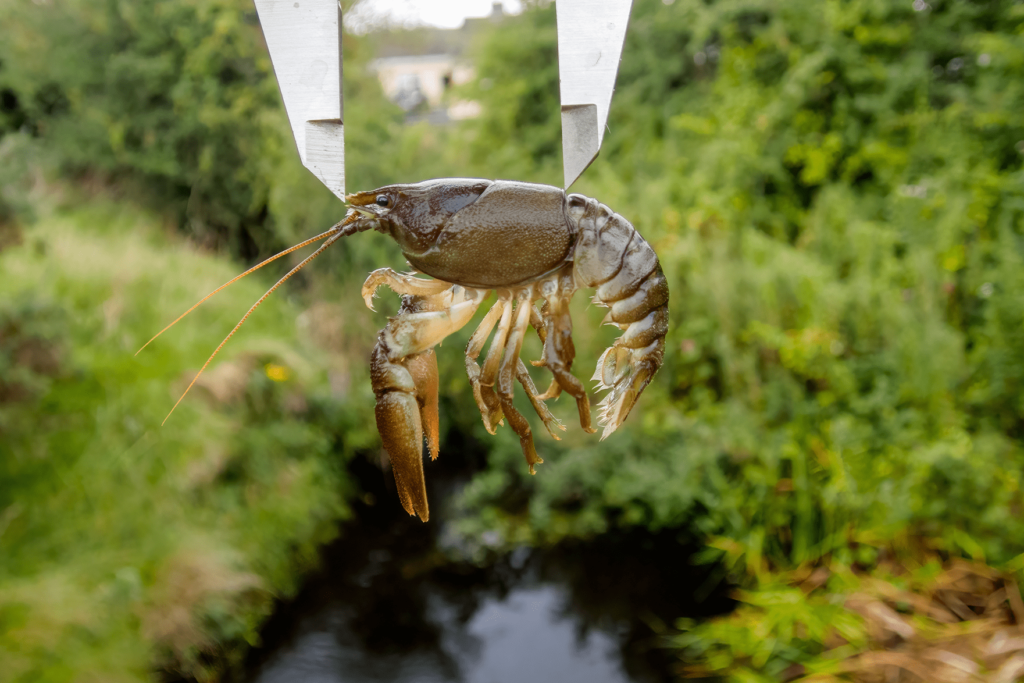The white-clawed crayfish Austropotamobius pallipes is listed on Annex II of the EU Habitats Directive. This species is still widespread in lakes and rivers over much of Ireland, but it is becoming increasingly restricted to headwater streams elsewhere in Europe.

We have extensive knowledge and expertise in relation to white-clawed crayfish surveys, and their assessment and management. Ecofact recently completed a contract on behalf of NPWS to provide monitoring baseline data for the conservation status of white-clawed crayfish in 25 Irish lakes. These lakes are located in the Bonet, Boyne, Corrib, Erne, Moy, Liffey and Shannon catchments.
Every six years, Member States of the European Union are required to report on the conservation status of all habitats and species listed on the annexes of the Habitats Directive as required under Article 17 of the Directive. The status assessments for white-clawed crayfish was submitted to the European Commission in June 2013, and Ecofact contributed significantly to the information presented in this document.
The global decline of the white-clawed crayfish is due habitat loss, but also more importantly due impacts of non-native crayfish, such as the Signal Crayfish Pacifastacus leniusculus and associated crayfish plague Aphanomyces astaci. Other non-native crayfish species that are a risk of introduction to Ireland include the Red Swamp Crayfish Procambarus clarkii and Spiny-Checked crayfish Orconectes limosis. Both of these North American species are crayfish plague carriers and already occur in Britain.
The presence of white-clawed crayfish on a site would be a planning concern, and efforts are required to ensure that white-clawed crayfish and their habitat are retained and suitably protected within a development. Typical mitigation measures for white-clawed crayfish include the removal of individual animals from the watercourse or water-body prior to, or during, construction operations, alongside habitat reinstatement, creation or enhancement as necessary.
For further information on white-clawed crayfish, and our survey work for this species, please see the links below. These include a photo gallery of some of the survey work for white-clawed crayfish which we undertook during the summer of 2014. The link to the Article 17 status assessment for white-clawed crayfish and can be found below. We have also provided a link to our report on white-clawed crayfish in Irish lakes which was produced by Ecofact on behalf of NPWS.
For more information on Ecofact’s experience in relation to white -clawed-crayfish and other Annex II listed aquatic species please contact info@ecofact.ie.
There needs to be a major change in the way lampreys are managed and protected in Ireland, or in the short to medium term we are going to lose these species from many of our rivers as has happened in other European countries. We believe that it was an error to give responsibility for lampreys to Inland Fisheries Ireland in 2009 and they have failed to protect them in Irish rivers, in our opinion. There are no fisheries for lampreys in Ireland, and never will be. We believe that protection of lampreys in Ireland needs to be returned immediately to the National Parks and Wildlife Service (NPWS).
We are internationally recognised experts in the management and conservation of lampreys. Please contact us if you have issues in relation to lampreys and we are available to work throughout the European Union.


Ecofact Environmental Consultants,
Tait Business Centre, Dominic Street.
Limerick City, Ireland
Website Design @ copperreed.com